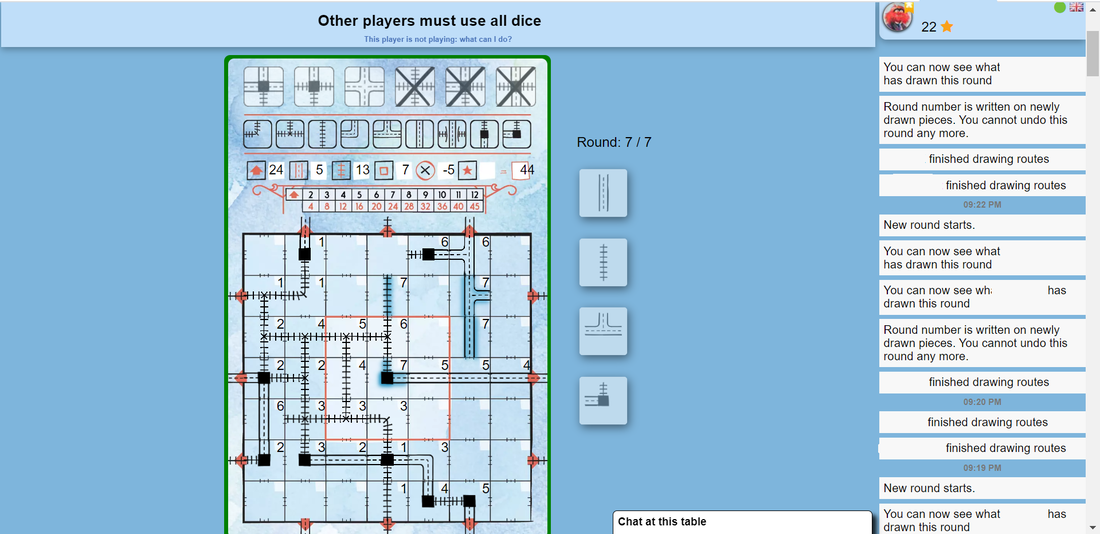|
4th July 2021 It's a Sunday evening and I'm logged into Board Game Arena. the next game of the night is Railroad Ink. Do you spend a lot of time coming and going? Because that's what you'll be doing in Railroad Ink. Caveat: we've only ever played Railroad Ink digitally online. Additionally, we've only played the basic version of Railroad Ink Blue without the rives and lakes dice. What's in a game?
Since we only played railroad Ink digitally, there's not much that can be said about the quality of the components. Neither does the game have any significant artwork to speak of, the boards look bright and cheery, but that's about it. How's it play? Setup
Railroad Ink is played simultaneously by all players over 7 rounds.
Endgame Once all 7 rounds have been completed, the game goes to scoring. Railway: Each player scores their single longest unbroken railway line, gaining 1 point per connected square. Road: Each player scores their single longest unbroken road, also at 1 point per connected square. Centre: Each of the 9 central squares on the grid scores the player an additional point for a railway or road that runs through it. Exits: Each player scores their single biggest network of connected exits, it scores differently to railways and roads and there's a chart to calculate this. Generally each exit in the network scores 4 points, except if you manage to connect the 12th and final exit, which scores 5 instead! Dead end: Each player loses a point for each route that is a dead-end, i.e. does not connect to anything or does not connect to the edge of the grid (does not necessarily need to be one of the 12 exits though.). Final amounts are tallied, highest score wins! Overall
Railroad Ink is a game that hits that sweet-spot between rules-simplicity and depth-of-choice that has good potential crossover appeal to non-gamers. From the relatively short length of this blog, you can see that it's an easy game to learn, consisting mostly of; well, drawing what you see! However, it also gives players lots of choices, all of which will have impact right from the start of the game. The game's grid has 49 spaces and the maximum that can be filled in (In a basic game!) is 31, enough room to manoeuvre and also enough room to commit error. Players must try to maximise networks and connections and also minimise their potential losses. This involves equally trying to anticipate what they need and also adapting to rolls that don't give them that. It's a game of shifting optimisation. Railroad Ink has a lot of randomness and for gamers who like strategizing, this can be an anathema, but in Railroad Ink, the randomness is partially mitigated because it more or less affects everyone equally, i.e., everyone uses the same dice results. Obviously one player may be luckier than another if the rolls go their way, but it never feels like the dice are treating you worse for you than any other player. Ultimately, despite the dice rolls, it feels like player decisions are still of paramount, finding a way to use a route die that initially seemed bad can be satisfying and it's this blend of randomness and decision-making is what I like about Railroad Ink.
0 Comments
Leave a Reply. |
AuthorI play, I paint. Archives
March 2024
Categories
All
|


 RSS Feed
RSS Feed
